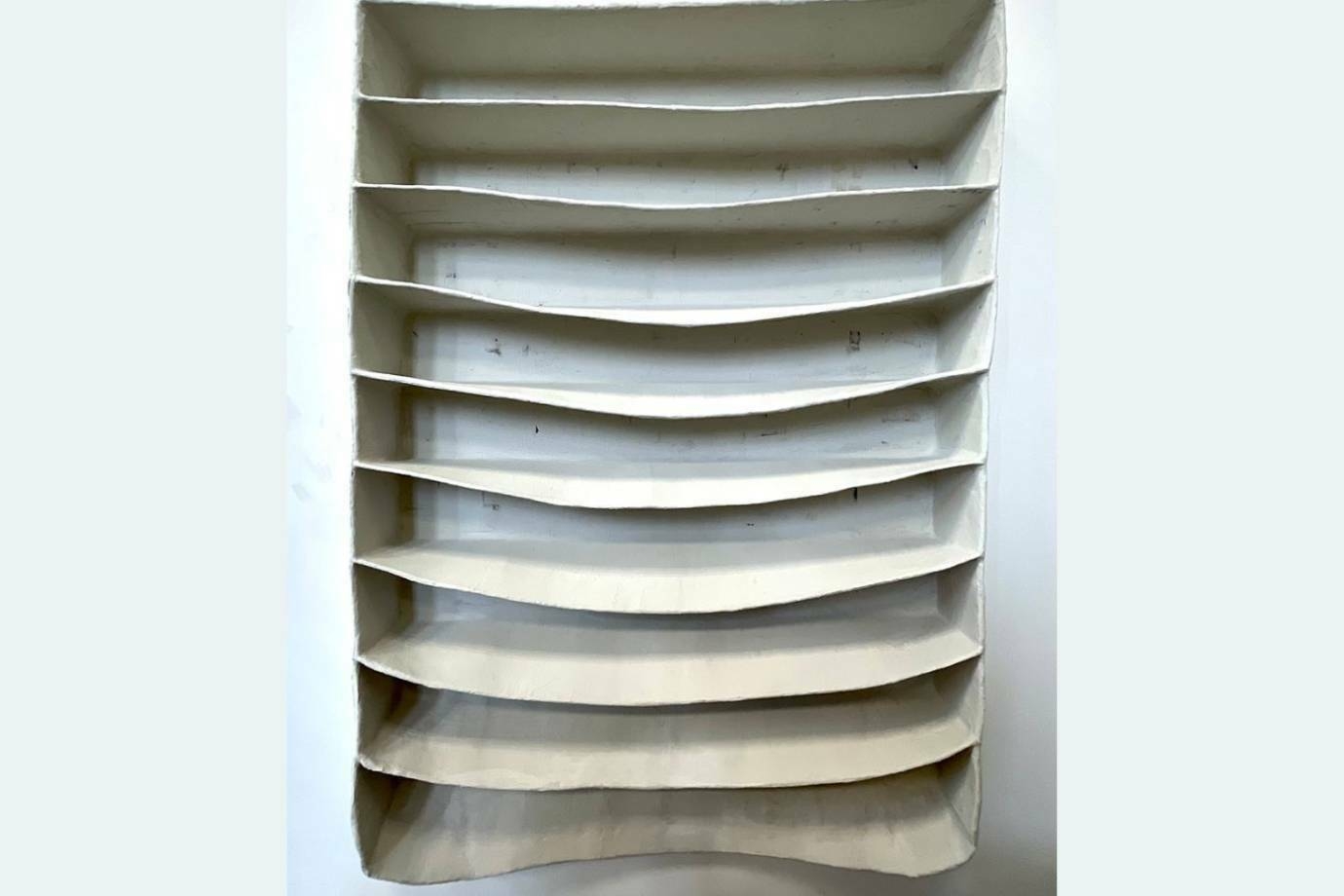The grip loosens – Eline Mugaas
Written by Line Ulekleiv
The fall of the material
Something is about to release, and comes to light as a slow and heavy movement in Eline Mugaas’ exhibition Loose inventory. Sculptural objects express a type of material fatigue built into the form, which successively comes to light. Their organic character points towards bodily transitions, where individual parts begin to emerge from a fixed form. It hangs, the fabric becomes looser, looser. Simply an element on the way down.
Time characterizes these objects. A collapsed cardboard shelf, Glapp, no longer has straight bearing capacity, but bulges dangerously where it hangs abstractly on the wall. The function of the parallel games is overplayed and pleated, a failed and the blind in the process of growing together. At the bottom it gravitates in an almost free float, torn out from the regularity of the repetition. Crumbled and ruinous, without being exalted antique. It weathers in the present in a physically noticeable way. Not like marble, not like cream, but grimy and temporary.
The body in a loop
The sculpture does not idealize decay, but can be metaphorically recognized – on the other side of creation and shiny newness. This bodily and mental state is as real as its ascending opposite. In the recognition of this tension lies a freedom – by not fighting so hard against, one clears space for an alternative maintenance of oneself.
The repetitive structure in cardboard may remind one of Robert Morris’s felt objects from the late 1960s, as a farewell to the hard-boiled, industrial form of minimalism. In the soft but robust felt, Morris reintroduced the body as “anti-form”; folds, bows and loose stacks all made their way to the floor. The material serves a more elastic principle and finds its own ways out of predefined modules. The body is the source and endpoint of an eternal loop, which is constantly twisting.




